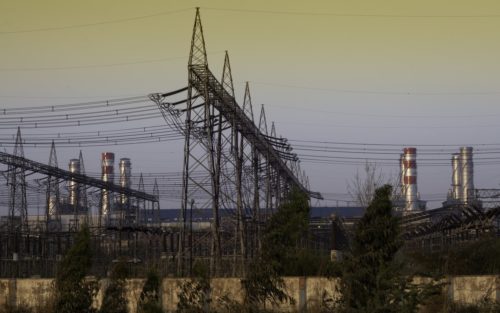Rural Indian electric power plant.

India’s Power Sector Must Plan for Climate Resilience
By Jagabanta Ningthoujam, Nuvodita Singh
Climate change-induced extreme weather events are increasing, and energy systems are feeling the impact.
The recent snowstorm in Texas is clear testament to that. The unexpected, prolonged storm caused an unplanned demand surge as people’s heating demand increased substantially in response. When coupled with a power market that values independence and cost optimization over resilience and geographical integration, the grid had neither the reserve margin nor the interconnection to address the sudden surge. This led to power plants shutting down rapidly, leaving millions without electricity in a rare brutally freezing winter storm.
India too witnessed a recent climate change-induced catastrophe when a flash flood washed away the Tapovan Vishnugad hydropower plant in Uttarakhand. India is facing rising heat stress which weakens Himalayan glacial mass and leads to higher incidence of droughts, storms, and floods. In the fifth most vulnerable country in the world to climate change, such tragedies are not likely to be one-off incidents.
As our economic growth and energy transition ambitions move us toward greater electrification, this risk to the grid will no longer be confined to the power sector alone. It is bound to have a cascading effect, ultimately impacting multiple end-use sectors including critical services such as healthcare and food storage. It will also impact new areas like transportation, which has traditionally had a different supply chain that remained shielded from risks to the grid.
This begs the question—are we prepared for a future that will demand a much more robust, reliable, and resilient energy infrastructure?
The short answer to the question is, not to the extent that will be required.
We must be able to plan for trends such as increasing demand for air conditioners in the coming decades. We must prepare generation and transmission assets to face rising heat stress. The challenge before us, in other words, is to have capacity to respond to the unforeseen and the unpredictable, the likes of which we’re seeing in Texas.
Building Resilience
Building resilience asks us to rethink how we generate, balance, and transmit electricity and how we plan for redundancies in a context of uncertainty.
Flexibility and back-up energy sources are going to be increasingly in demand. This will involve incorporating decentralized renewable energy systems, adopting hybrid systems (solar plus wind, for example), employing utility-scale battery storage (which has seen an 89 percent decrease in costs since 2010), and using advanced renewable forecasting. Flexibility can also be driven by geographical interconnection and demand management. It is something we are gradually moving toward at a systems level.
Where we are lacking, however, is weatherizing and grid hardening, especially at the distribution end where poor design and construction standards and practices continue to plague us. This is evident from all the poorly constructed distribution poles we see the moment we venture out of our urban confines.
A higher design standard will be required for a grid that can withstand climate shocks. It will cost more but it is bound to help avert repair, system interruption, and maintenance costs. The cost can further be optimized with hardening only necessary infrastructure—the kind that support critical services—and by comparing the resilience investments with the remaining useful life of an asset. This will demand detailed analysis with data on probability and distribution of natural disaster risk and their potential evolution due to climate change.
Ultimately, we need to build redundancies into our systems. Texas’ flaw was that it didn’t design its system for the possibility of such extreme weather. In normal circumstances, it means a well-functioning electricity market. But the events of mid-February were anything but normal for Texas.
This will entail long-term investments in the electricity sector and improving the financial state of our electricity distribution. However, the cost of doing nothing is bound to be bigger. Resilience of power systems is an imperative not just to secure reliable supply of power, but because it directly impacts social resilience to climate change as well. Needless to say, that is crucial for India’s development and security. And there is no better time to do this than while our power system is growing and transitioning.
Jagabanta is a Senior Associate with RMI India. He focuses on mobility and electricity issues in the country.
Nuvodita is a fellow/consultant at RMI India under the fellowship program. She works with the team on electricity sector decarbonization and energy systems resilience in India.